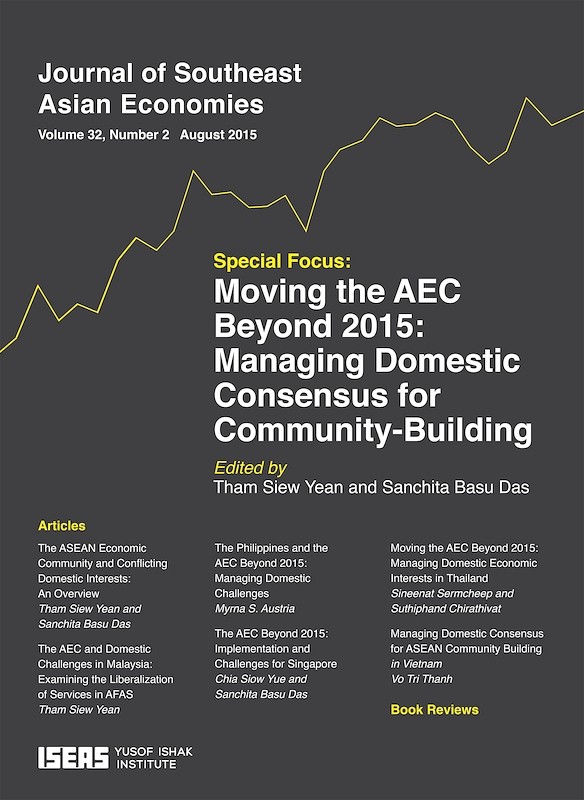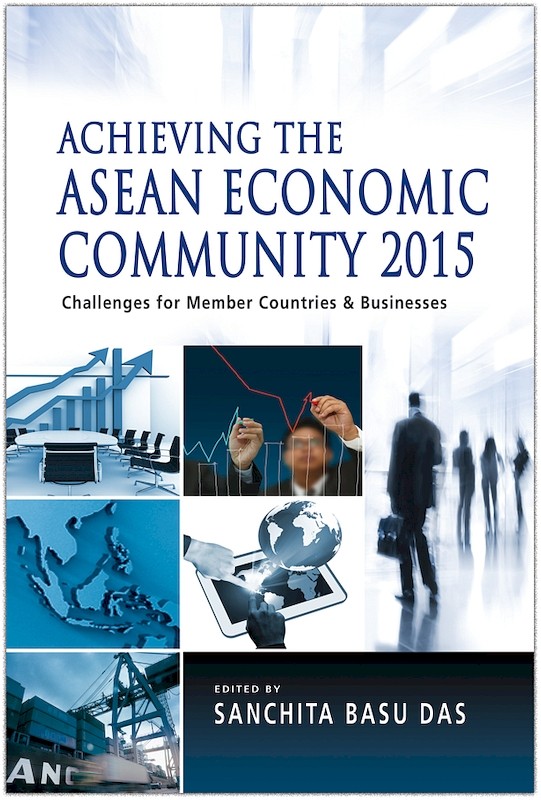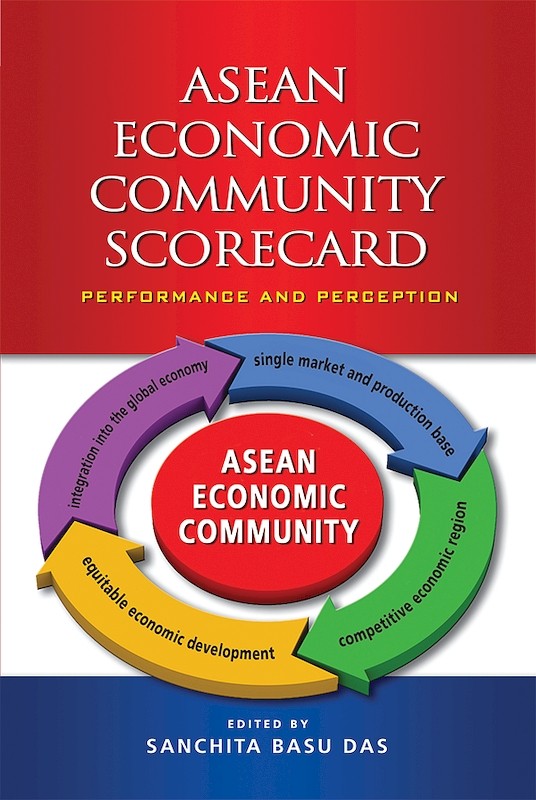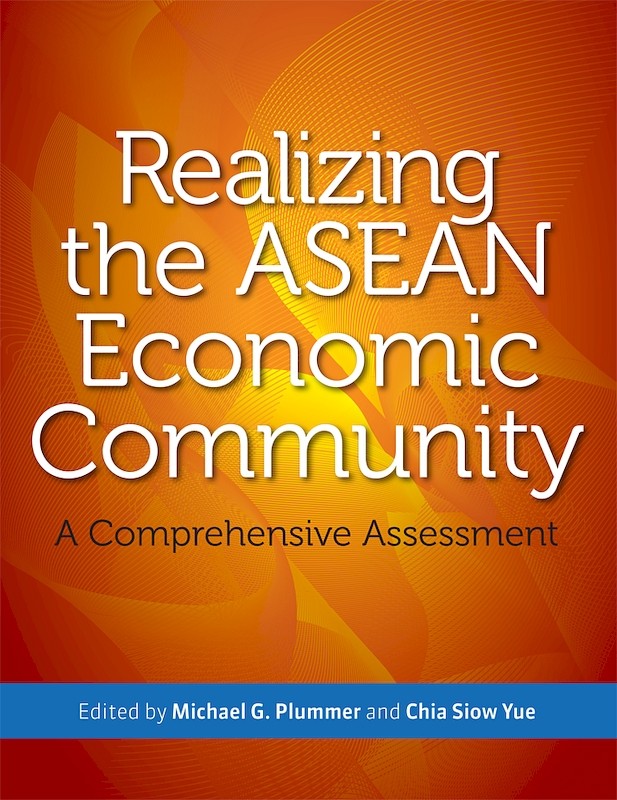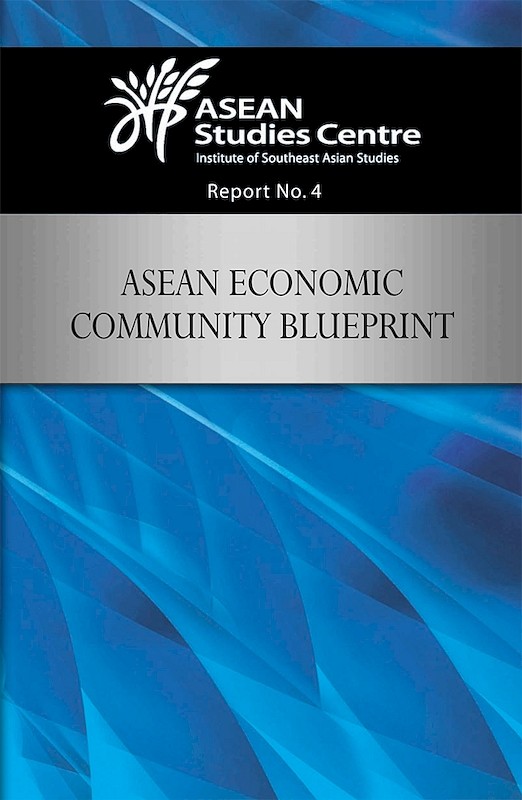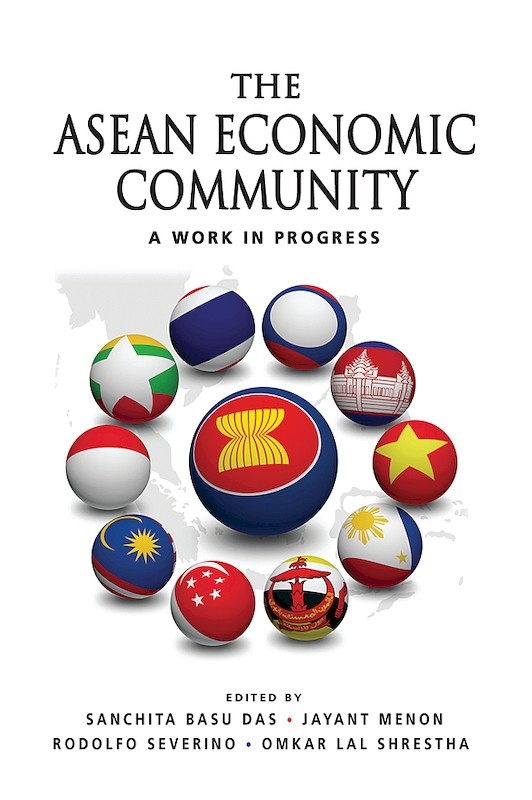Moving the AEC Beyond 2015: Managing Domestic Consensus for Community-Building
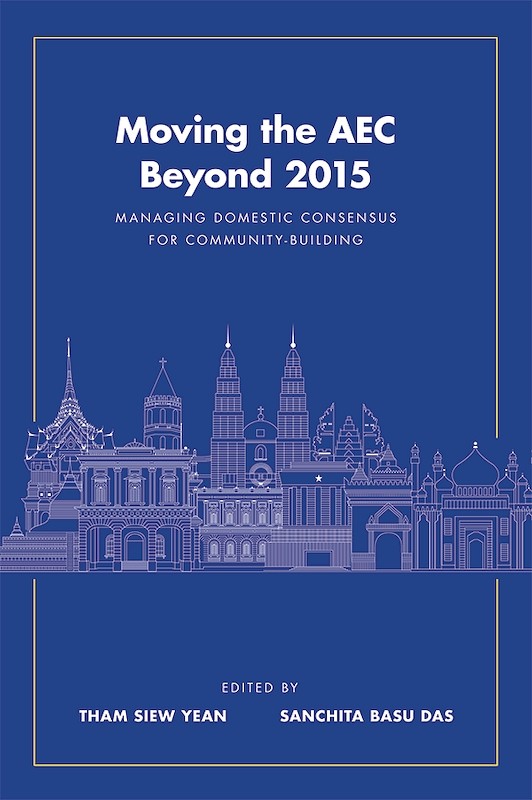
Date of publication:
2016
Publisher:
ISEAS – Yusof Ishak Institute
Number of pages:
211
Code:
BM537
Soft Cover
ISBN: 9789814695510
Reviews
Evelyn S. Devadason, Asian-Pacific Economic Literature, 2016.
"[This book] provide[s] timely information on the recently launched ASEAN Economic Community (AEC), which has generated immense debate over the lack of momentum in the integration process. The collection of eight chapters in the first volume presents an informative review of the fragmented state of community building in the ASEAN region. It includes six country chapters – Indonesia, Malaysia, the Philippines, Singapore, Thailand, and Vietnam – that detail the nature of domestic economic conflicts afflicting these countries' readiness to embrace the AEC.
.... [This book is] required for a full view of understanding and addressing the unfinished agenda of the AEC. [It] should be read by academics, researchers, and students of Southeast Asian studies. More specifically, the domestic issues raised in the first volume provide useful insights for practitioners and policymakers into what needs to be done in member economies to realise the AEC in 2015.
About the publication
The ten Southeast Asian economies reached a milestone on 31 December 2015, when they announced the formation of an ASEAN Community. Although this includes three pillars - ASEAN Political-Security Community, ASEAN Economic Community (AEC) and the ASEAN Socio-Cultural Community - it is the economic pillar that generates immense debate, due to its expected quantifiable benefits to member countries. This book, thus, focuses on the ASEAN Economic Community and seeks to explain the need for building domestic consensus within the member countries. It starts with an overview chapter describing the current achievements of the AEC. It then explores possible explanations for the achievements/non-achievements and offers a hypothesis on conflicting economic interests in a country as one possible explanation for gaps in implementation. This is because any form of economic liberalisation brings with it the winners and losers, thereby raising resistance to liberalization measures and slowing down the implementation process.
The book includes six country chapters - Indonesia, Malaysia, the Philippines, Singapore, Thailand and Vietnam - that examine sources of domestic conflict/s in greater detail and depth. It also includes a regional chapter, co-authored by the ex-Secretary General of ASEAN, Mr Rodolfo Severino, that brings out the political nature of ASEAN economic cooperation since its inception in 1976. For ASEAN beyond 2015, the book articulates the need to obtain a strong domestic consensus that supports the integration initiatives of the AEC. This can be viewed as a way forward to accelerate and deepen integration within ASEAN. The book concludes with some suggestions on how each country can move towards achieving domestic consensus, based on the respective country level analysis.
The e-chapter on " Introduction" , is downloadable free of charge.
The book includes six country chapters - Indonesia, Malaysia, the Philippines, Singapore, Thailand and Vietnam - that examine sources of domestic conflict/s in greater detail and depth. It also includes a regional chapter, co-authored by the ex-Secretary General of ASEAN, Mr Rodolfo Severino, that brings out the political nature of ASEAN economic cooperation since its inception in 1976. For ASEAN beyond 2015, the book articulates the need to obtain a strong domestic consensus that supports the integration initiatives of the AEC. This can be viewed as a way forward to accelerate and deepen integration within ASEAN. The book concludes with some suggestions on how each country can move towards achieving domestic consensus, based on the respective country level analysis.
The e-chapter on " Introduction" , is downloadable free of charge.
Contents
-
Moving theAEC Beyond 2015: Managing Domestic Consensus for Community-Building
[Whole Publication, ISBN: 9789814695527], by Tham Siew Yean, Sanchita Basu Das, authors -
Preliminary pages
-
1. Introduction: Economic Interests and the ASEAN Economic Community , by Tham Siew Yean, Sanchita Basu Das, authors
-
2. ASEAN Economic Cooperation and Its Political Realities , by Rodolfo C Severino, Moe Thuzar, authors
-
3. Indonesia's Implementation of Facilitation and Harmonization Measures under the AEC, by Yose Rizal Damuri, author
-
4. The AEC and Domestic Challenges in Malaysia: Examining the Liberalization of Services in AFAS , by Tham Siew Yean, author
-
5. The Philippines and the AEC Beyond 2015: Managing Domestic Challenges , by Myrna S Austria, author
-
6. The AEC Beyond 2015: Implementation and Challenges for Singapore , by Chia Siow Yue , Sanchita Basu Das, authors
-
7. Moving the AEC Beyond 2015: Managing Domestic Economic Interests in Thailand , by Sineenat Sermcheep, Suthiphand Chirathivat, authors
-
8. Managing Domestic Consensus for ASEAN Community Building in Vietnam , by Vo Tri Thanh, author
-
Index

